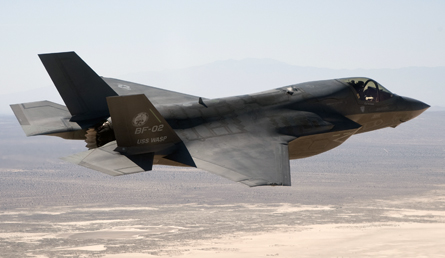The Lockheed Martin F-35B short take-off and vertical landing (STOVL) variant of the Joint Strike Fighter (JSF) has completed a series of engine air start tests, which involve shutting down and restarting the jet's Pratt & Whitney F135 turbofan in flight.
Aircraft BF-2 successfully completed a series of 27 air starts at various altitudes and using various methods on 15 August at Edwards AFB, California, according to the US Naval Air Systems Command.
"The aircraft and its integrated systems demonstrated intentional flameout and successful recovery scenarios during air start flight tests, and BF-2 and the team did a great job," says Roy Hauck, P&W's site lead at the F-35 Patuxent River integrated test force in Maryland.
 |
|---|
Lockheed Martin |
Air start testing is required for the F-35B to undertake high angle-of-attack trials next year. The US Air Force's F-35A variant had earlier completed its air start testing at Edwards AFB.
"High alpha, or angle-of-attack tests, are important for us to fully evaluate the aircraft's handling characteristics and warfighting capability," says US Marine Corps test pilot Lt Col Matthew Kelly. "Maximising the performance of the airplane around the very slow edges of the flight envelope is probably some of the most challenging testing we will conduct. After we get through it, we'll know a lot more about how this aircraft will perform during combat within visual range."
Though normally flown at NAS Patuxent River, the US Navy deployed the F-35B and a Boeing F/A-18 Hornet chase aircraft to take advantage of Edwards' massive dry lake bed, which makes for an ideal landing strip in case of emergency.
Source: Flight International



















